Roland M-5000 Series Features
A variety of intuitive features in direct response to sound engineers requests
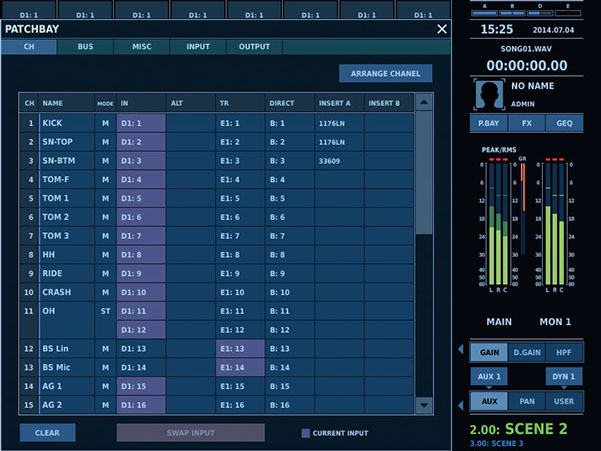
Set three inputs per channel with full backup support
Three inputs can be set for each input channel of the console: primary input (IN), alternate (ALT) and track input (TR). For example, assigning the main vocal mic to "IN" and a backup mic to "ALT" allows for instant switch-over on the CH EDIT screen in the event of a mic failure. "TR" assignment is also available for backup audio as well as recording or virtual rehearsal/playback from a Roland R-1000. This is convenient if running recorded rehearsal content and also being able to easily patch in a previously captured track. Along with¬ individual settings at the CH EDIT window, the system also¬supports global switching via scene setups.
Mono/stereo-settable input/output channels
Input and output channels can be set as either mono or stereo in the channel edit mode. Channels used for stereo can be made stereo pairs for input, not just adjacent channels.
Dynamics and EQ sections that permit reordering
The two Dynamics blocks can be used simultaneously enabling, for example, a compressor at an earlier stage and de-esser at a later stage. The sequence of the Dynamics and EQ sections can also be reordered.
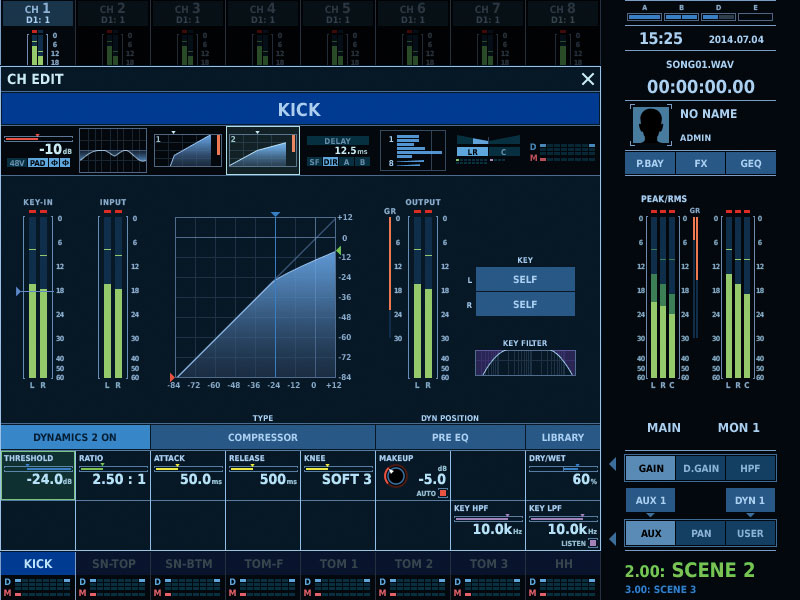

Dynamics, Equalizer, and signal delay for both inputs and outputs
Input channels, AUX, Matrix, Group, and Main Out are switchable between mono and stereo, The signal flow for each is provided with high and low-pass filters, two independent Dynamics sections (with Compressor, Gate, Expander, Ducker, and Limiter selectable for each), a 4-band fully-parametric equalizer, and signal delay. Full-featured audio processing is performed not just at the input stage, but at the output stage as well. Effect insertion points can be set both before and after the Dynamics and EQ blocks.
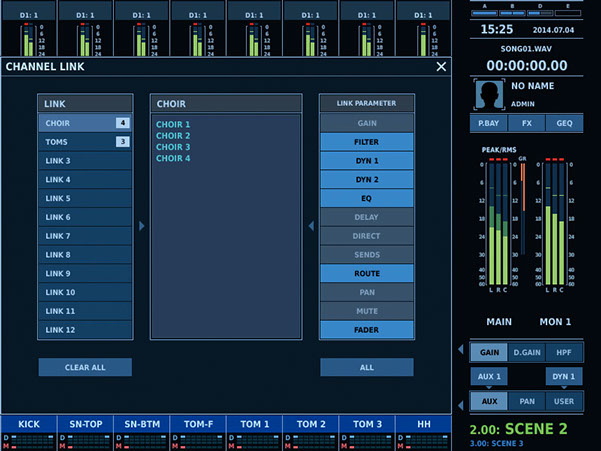
A Channel Link function that allows up to 12 Group settings
The Channel Link function permits freely linking parameters for multiple channels. Channels are linked by going to the CHANNEL LINK window and selecting a LINK group, then successively registering each channel by pressing the SEL button above its fader, making it possible to change the parameters to be edited all at once. Linkable channel parameters can be registered for each Group enabling operations such as individually linking EQ, Dynamics, and other parameters or selecting ALL to sync all parameters allowing setup of parameters for multiple channels in a single operation.
Selectable LINK PARAMETER settings:
GAIN / FILTER / DYN1 / DYN2 / EQ / DELAY / DIRECT / SENDS / ROUTE / PAN / MUTE / FADER
Main Out supports 5.1 surround, LCR, and LR. Built-in surround panning and stereo downmix
As with the Input channel, the Main Out bus has two Dynamics and EQ blocks that can be switched in and out. Effect insertions are settable as well. In addition, 5.1 surround, LCR, and LR can be selected as output destinations and simultaneous stereo downmix output is possible when in 5.1-channel mode. The 5.1 output also supports surround panning, and when using LCR output, LCR PAN can be used to set the output balance for left, center, and right.
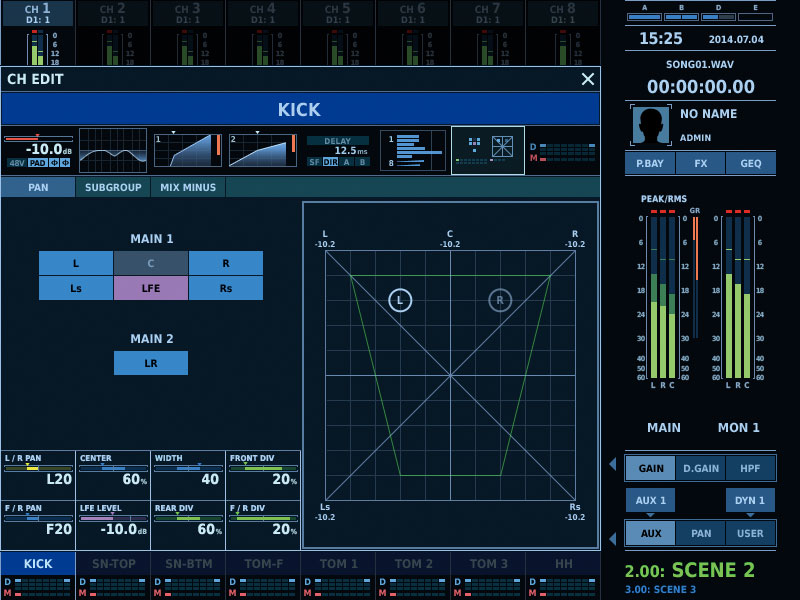

Monitor output supporting 5.1-channel surround
As with Main Out, monitor output is provided on two types of buses: Monitor 1, which supports 5.1-channel surround, and stereo-compatible Monitor 2. For 5.1-channel monitoring, individual delay and an Alignment function allowing level adjustment are built in for LCR, LEF, Ls, and Rs. Moreover, Monitor 1 and 2 each have an Insert circuit. A flat monitor environment can be created by assigning graphic equalizers to monitors.
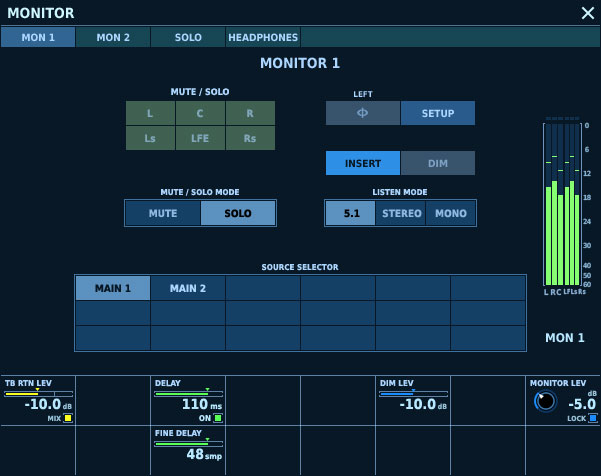
Built-in Sub-Group bus
The M-5000 is equipped with a Sub-Group bus for using POST Fader to send signals from the desired channels. As on the other output buses, Dynamics, EQ, Delay and Insert Effects can be used to adjust the sound.
Mix-Minus function
The M-5000 features a Mix-Minus (minus one) function, indispensable to recording and relay feeds. The required number of outputs from this can be set as desired.
24 DCAs
The M-5000 includes 24 DCAs. These are useful when globally controlling a large number of input channels, such as a string section or drums.
8 MUTE groups
Eight sets of MUTE groups are available. Registering these in the user-assignable area makes it easy to turn muting on and off at the single touch of a control.
8 stereo multi-effects
The M-5000 features a total of eight stereo multi effects for input and output. These can be inserted and used at any desired point in input channels, AUX's, Matrices, Groups, and Main Outputs. The multi-effects include Digital Reverb, Delay, Multi-band Compressor, and Dynamic EQ, and are modeled on leading Roland effect processors that include: the SRV-2000, SDE-3000, SDD-320, RE-201, CE-1, SPH-323 and SBF-325. In addition, Distortion and Delay (digital and analog) modeled on BOSS compact pedals are also included.
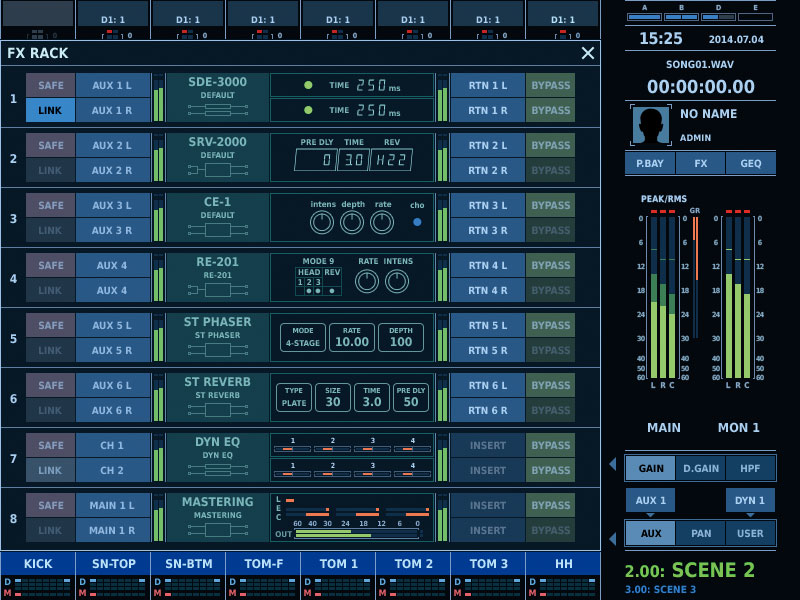
Two selectable Solo systems
The monitor feed is provided with two stereo solo buses. For example, Solo 1 can be used for stage monitor speakers, and Solo 2 can be used for in-ear monitors. Solo 1, Solo 2, or Solo 1+2 is selectable. The headphones bus can also select either Monitor 1 and 2 to use as the source for monitoring and features a dedicated delay as well. This allows for sound alignment with FOH or other configurations.
Solo In Place function
 Pressing and holding the Solo In Place button for at least two seconds activates the function. Switching on a solo on an input channel during Solo In Place mutes the other input channels and outputs only the solo-on input channel to the routing destination.
Pressing and holding the Solo In Place button for at least two seconds activates the function. Switching on a solo on an input channel during Solo In Place mutes the other input channels and outputs only the solo-on input channel to the routing destination.
32 graphic and parametric equalizers
Graphic equalizers and parametric equalizers are independent of the multi-effects. Up to 32 graphic and parametric equalizers can be used simultaneously. As with the Channel Link function for inputs, the setting of graphic and parametric equalizers can be changed at the same time.
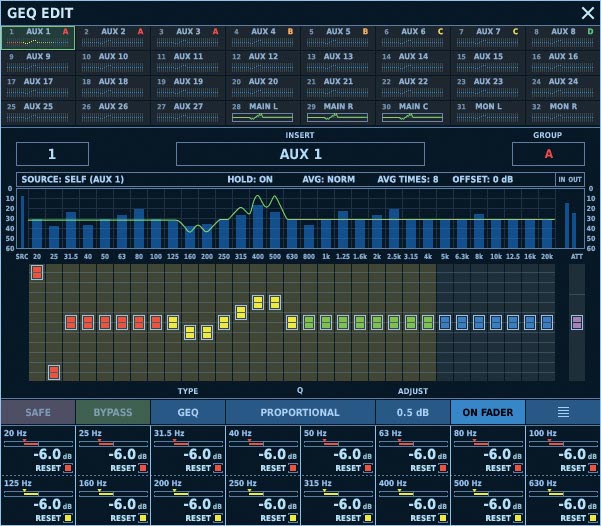
Two audio analyzers
Two 31-band audio analyzers are provided for the console and dedicated RCS. Each can be assigned not only to the desired bus output, but to inputs as well. *Available in Q4, 2015
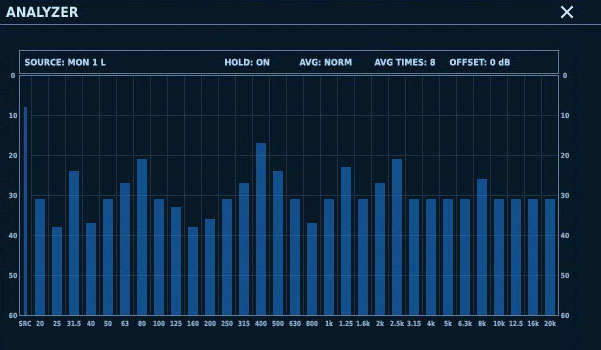
System layout using the built-in REAC master/slave modes
OHRCA features a slave mode in addition to a master mode. This makes two-way transmission of audio input and output possible between two OHRCA consoles, M-480, M-300, M-200i, or other V-Mixers. Settings allow input to the master console using output from a slave deck, or vice versa.
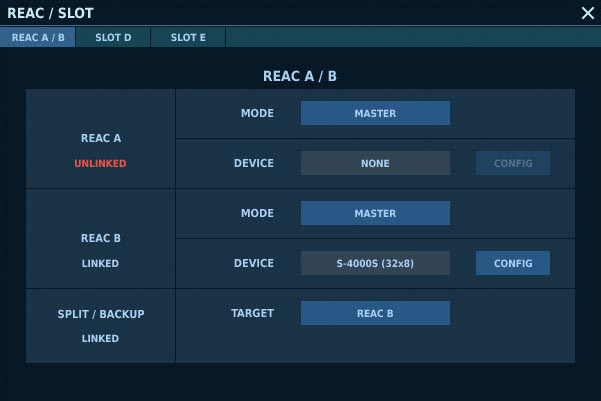
External control using GP I/O
The rear panel is equipped with eight GP I/O input connectors (including TRS phone jacks) and 12 GP I/O output connectors for external control. Latch and momentary settings are possible. These can be used for beginning CD playback on fader start and preventing incorrect operation while live on the air. They also make possible a wide range of control, including setting delay times by tapping, switching monitor speakers on and off by means of an external cough switch, monitor interrupts with dimmer during talkback, and more.
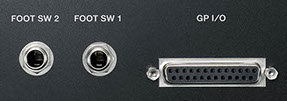
Talkback settings for up to 3 locations
Three Talkback systems are provided as output destinations making communication possible between three locations, such as FOH and the monitor position as well as between FOH and a relay vehicle. During talkback return, the desired TALK switch can be made to flash to indicate the call source. In addition, the amount of volume reduction performed by the Monitor Dimmer function during talkback can be adjusted individually for Monitor 1 and Monitor 2.


A variety of built-in control interfaces, including RS-232C, MIDI, and Remote
OHRCA offers full support for RS-232C, MIDI, and other control command systems. The Remote connector allows remote operation over a LAN connection from a Windows or Mac computer using the RCS program.
Support for word clock input and output
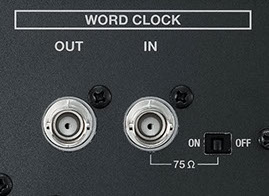
The console is equipped with a word clock connector, essential for system configurations using multiple digital devices.
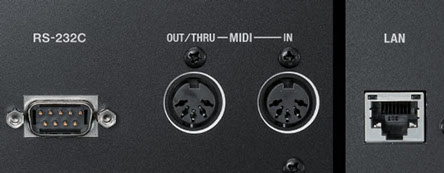
 Lamp connector
Lamp connector
The console is equipped with an XLR-4-31 type connector for supplying power to a third-party gooseneck lamp (DC 12 V/500 mA).
Remote Control and Recording
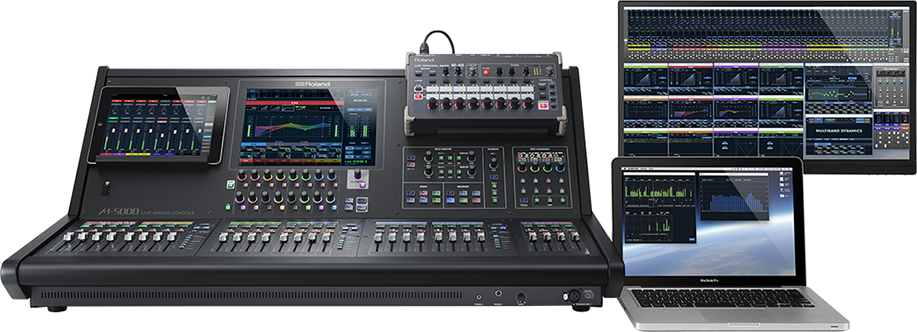
Remote Control Software (RCS)
Use the Roland M-5000 RCS program to operate the console from a computer (Mac/Windows). Connection can be made via USB or REMOTE connector, allowing operation over a LAN. The GUI for the M-5000 RCS allows multiple windows, and features support for high resolution displays and other optimizations. This enables use of a second display for viewing even more windows such as a large meter view of inputs and outputs. *The Roland M-5000 RCS is available as a free download from Roland's website. *Available in Q4, 2015
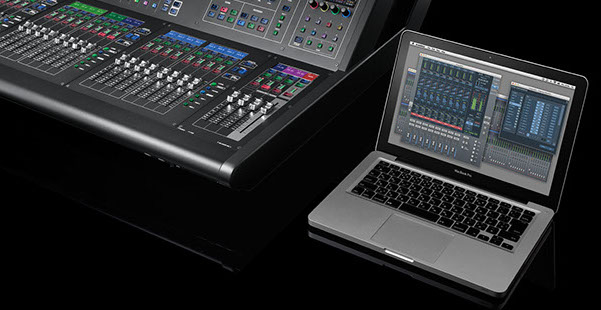
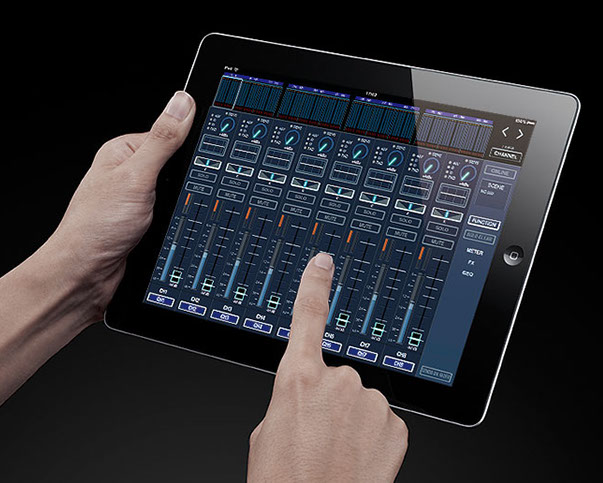
Remote control using an iPad
The dedicated M-5000 Remote app supports remote control from an iPad. Any of three methods can be used for connecting the iPad: a) wired hookup using the Dock connector, b) through a router connected to the LAN port, or c) direct ad-hoc connection using the a Wireless USB LAN Adapter. Also, two-channel recording and playback using the Dock connector for iPad attachment is supported as well. The remote-control iPad can be used to perform recording and playback, and input sources and output channels can be assigned as desired. The GUI for the iPad app features full suport of Retina displays enabling crystal clear graphics.
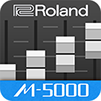 M-5000 Remote
M-5000 Remote
Dedicated iPad app for remote control Free download from Apple Store. Available in Q4, 2015
Configuration of personal mixing/monitoring solution
Personal mixing/monitoring for every musician can be achieved by using the M-48 personal mixer with its 40-channel mixing engine.
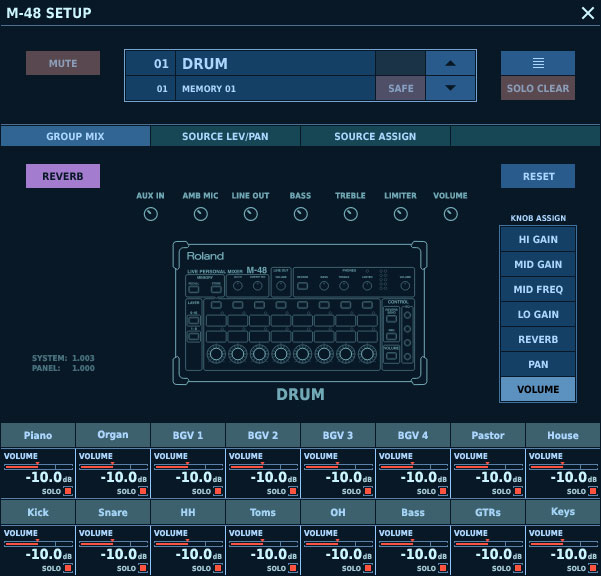
Built-in Engineering
Monitor function
For the monitor engineer using M-48 Personal Mixers, the M-5000 offers an Engineering Monitor function that mirrors the musician's M-48 enabling the engineer to check the mix and hear exactly what the musician is hearing. The M-5000 allows selection of the REAC A or B port for the monitor feed, and an M-48 unit can be connected directly to the M-5000's backup port which is equipped with Embedded Power.
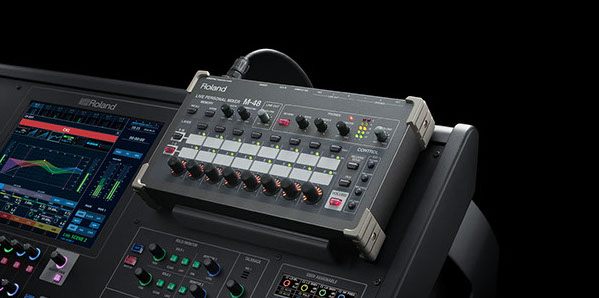
M-48 Personal Mixer being used an an Engineer's Monitor, powered by the Backup port.

A 16x16 USB audio interface
The Roland M-5000 features a 16-in/16-out USB Audio interface function enabling 16-channel recording and 16-channel playback using a DAW.
Recording and playback using an R-1000
Connecting an Roland R-1000 delivers playback and recording on up to 48 channels (at 48kHz; 24 channels at 96kHz). This enables the operator to put R-1000 output on standby at the SUB input (TR) on the M-5000 for virtual rehearsals, redundancy, or track playback. What's more, the M-5000 is capable of remotely operating multiple R-1000 units, enabling successive playback from song files and stacked, synchronized units for more tracks. (e.g. 2 x R-1000 deliver 48 tracks at 96kHz).
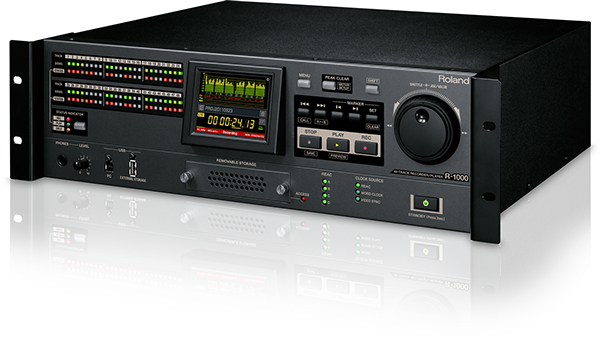
Roland R-1000 48 Track Recorder/Player
Back to top
© 2015 Roland Corporation